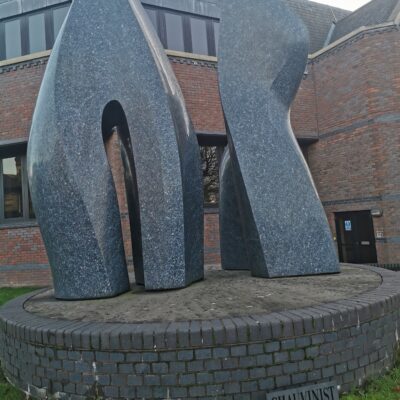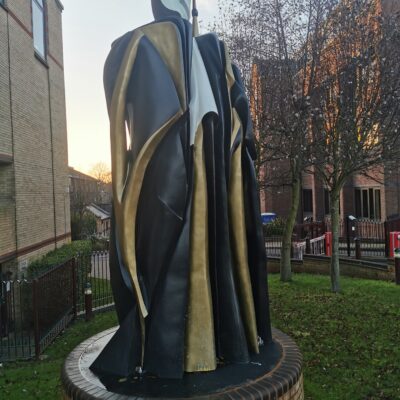Search by topic
- archaeology
- architecture
- bricklayer
- Building of Local Interest
- carpenter
- church
- crime
- dressmaker
- fire
- general labourer
- Great Eastern Railway
- listed building
- medieval
- oral history
- Public House
- Rattee & Kett
- Roman
- scholar
- school
- Then and Now
- tudor
- women
- work
- world war one
- world war two
Search by text
 Kings College arms
Kings College arms14 (8) Hills Road (2 Cintra Terrace)
History of 14 Hills Road
Pevsner notes (Cambridgeshire p. 327): the retained facade of Cintra House, originally added c 1860-5 to an early C19 four-storey terrace. The design is reportedly by John Edlin, in a very coarse eclectic style, with a row of roundels and heads sticking out of them.
1861
(8)
Michael E Smith, 45, captain … officer, b Ireland
Jane G, 30, b Scotland
Frederick A Smith, 33, brother, Captain 1st Royals, b Ireland
Amelia Pike, 25, servant, b Devon
Ann Pinion, servant, 21, b Kent
Sarah Shearman, servant, 17, b Ely
Harriett Baines, 75, clergyman’s widow, b Hunts
1871
(8 Hills Road)
John Halsey Law, 61, landowner barrister retired, b Herts
Matilda Shropnell, 46, servant, b Bath
Sarah Haines, 28, servant, b Somerset
John Halsey Law (c1810-1877) was a Fellow of King’s College
1881
(2 Cintra Terrace)
Reginald Calvert, 48, Chief Constable of Cambridgeshire, b Manchester
Maria, 45, C C wife, b Manchester
Marian, 14, b Canterbury
Willam Levitt, 20, indoor servant, b Waterbeach
Fanny Todd, 25, cook, Newport Pagnell
Emma Elliott, 22, housemaid, Northants
Jane Humphreys, visitor, 46, gardiner’s wife, Hants
Lillian Humphreys, visitor, 7, b India
Amy J, 2, visitor, b Bucks
1891
(vacant)
1901
Kate G Elmslie, 43, b Scotland, living on own means
William A L, 16, b London
Elizabeth Brown, 50, b Hants, cook
Rebecca Gordin, 20, b Milton, housemaid
Contribute
Do you have any information about the people or places in this article? If so, then please let us know using the Contact page or by emailing capturingcambridge@
License
 This work is licensed under a Creative Commons Attribution-NonCommercial-ShareAlike 4.0 International License.
This work is licensed under a Creative Commons Attribution-NonCommercial-ShareAlike 4.0 International License.












